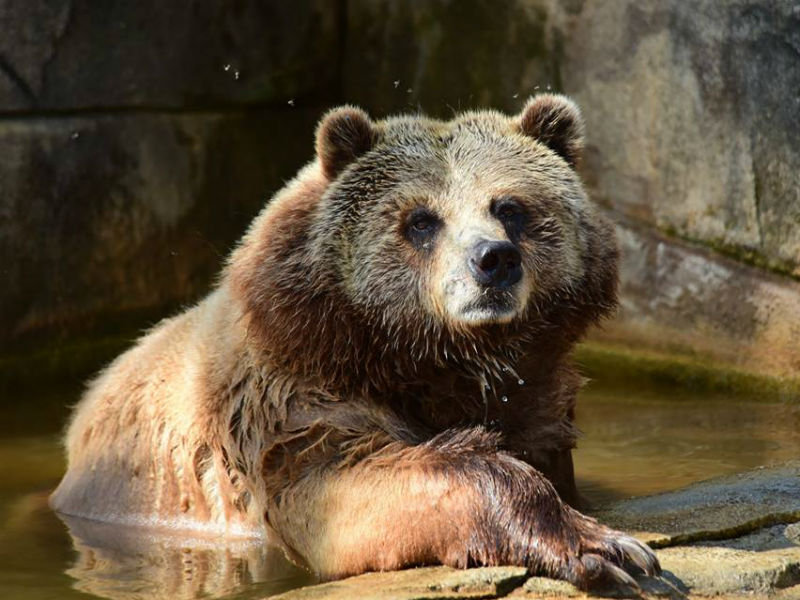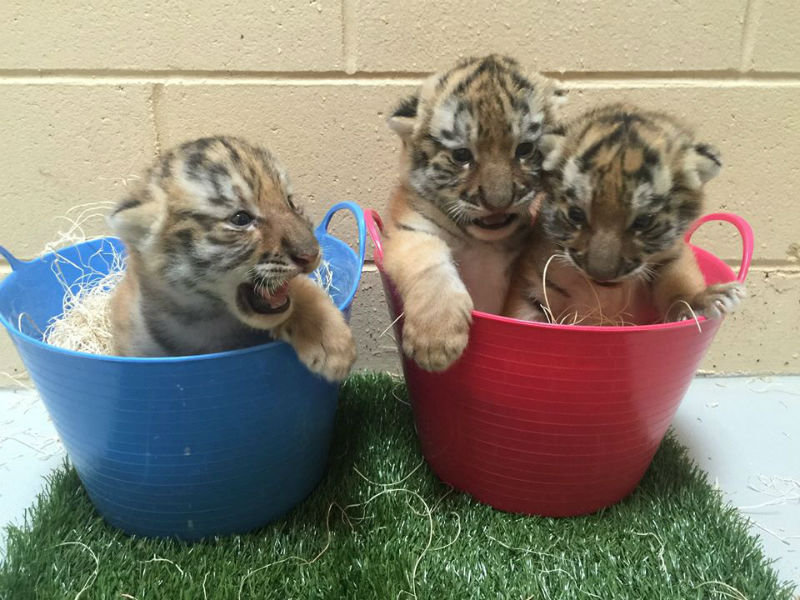Molly Snyder's paean to Samson the gorilla – "Milwaukee's most celebrated zoo resident of all time" – cries out for a rebuttal on behalf of an animal that not only kicked Samson's big hairy keister as a local zoo attraction, but could've literally done so in a fight under the Marquis of Queensbury rules.
I refer to "Bob Fitzsimmons Jr.," a six-foot-plus red kangaroo that drew huge crowds to the Washington Park Zoo after he took up residence there in 1916 and right up to his death in 1927.
Big, adoring audiences were nothing new to Bob, who was used to them from his earlier career on the vaudeville circuit where he was toasted as, in the words of the Crawfordsville (Ind.) Review when he performed in a theater there in 1915, the "wonder of two continents."
Samson just sat in his glass cage and looked tough. Bob Fitzimmons Jr. proved his toughness by putting up his dukes in the boxing ring for 22 years before his well-earned retirement at the zoo. "His name was emblazoned in newspapers and banners heralding the sensational fighting kangaroo," reported the Milwaukee Sentinel in a 1925 article.
That name, by the way, came from one of the greatest human boxers of all time – Bob "The Fighting Blacksmith" Fitzsimmons, who won the world's middleweight and heavyweight titles in the 1890s, and then the light-heavyweight title in 1903. In the 1920s, Fitzsimmons' son, Bob Jr., was a notable heavyweight boxer known as Young Bob Fitzsimmons, perhaps to distinguish him from his dad's famous marsupial namesake.
The kangaroo Bob Jr. did his boxing with the Gordon Brothers, a well-known vaudeville duo whose act consisted of fancy bag punching and mixing it up with their towering sparring partner from Australia for up to three rounds at a time.
The heyday of the boxing kangaroo was the very late 1800s. According to an item in the Bruce (New Zealand) Herald of April 30, 1897, three years earlier in England a boxing 'roo called Jack had "made more money than any other animal, more even than the most celebrated racehorse had earned."
Jack "boxed every day with a regularity and apparent zeal which would not have discredited a human professional," noted the article, thanks not to any special training but to the fact that "a tame kangaroo, when not afraid of his owner, always 'boxes' if he is sparred with, putting up his short forearms (and) retaliating by blows like those which a rabbit gives with his forefeet."
For a while, boxing kangaroos were so much in demand for entertainment that unscrupulous (and not very bright) promoters tried to palm off men wearing kangaroo suits as the real item.
By 1912, Bob Jr. was the undisputed champ of his species – "a real white hope in the boxing line," according to The Iowa Unionist newspaper of Des Moines. The reference was a lame one to the hysterical national campaign to find a "White Hope" to smite down Jack Johnson, the reigning African-American heavyweight ring champ who infuriated white society by dispatching light-skinned challengers with smiling ease. Bob Jr. was probably better than most of them, but he was, after all, an animal, and a red one, besides.
When Bob and his handlers played the Family Theater ("The Home of Polite Vaudeville") in Rome, N. Y. in early 1914, the local Daily Sentinel warned its readers not to miss seeing "the Screamingly Funny Boxing Kangaroo."
In late 1916, he and the Gordons were in town playing a one-week engagement at the Palace Theater on North 6th Street and Grand (later Wisconsin) Avenue when, with the USA on the brink of entering World War I, the brothers decided to quit show business and enlist in the Army. They donated Bob Jr. to the Washington Park Zoo, and his boxing days were over.
"Soon his inactivity began to tell," reported an article in the Sentinel on April 1, 1925, "and he became merely a lounger." And, like many a former pug, he suffered the consequences of his long career in the ring. "Like the profession he was trained to mimic," said the Sentinel article, "Bob, who is over 30 years old, gave his best in his youth, and now, in his declining years, his eyesight is failing."
Two years later, his death from old age on March 19 made the front page of The Milwaukee Journal. "It is expected that the body will be presented to the public museum," reported the paper.
But it wasn't, according to Carrie Becker, communications manager for the Milwaukee Public Museum. "We do not have record of this kangaroo coming to us," she responded to a query about Bob's remains. "Of the kangaroos we have cataloged here, none fit the time period or source."
Let us hope poor Bob, or at least part of him, didn't end up on the menu at the next gala for zoo bigwigs. One website reports that "a rather rich soup ... is made out of (kangaroo) tails."
Unless it was the soup pot, wherever Bob Fitzsimmons' carcass ended up it was barely cold when his old pals the Gordon Brothers were back barnstorming the country with another boxing kangaroo they also called Bob.
"It's a very generous mouthful to state that the justly-celebrated Gordon Brothers have the most novel animal act on earth," raved the Livonia (New York) Gazette, "but the facts warrant the sweeping assertion. Not one person in a thousand has ever seen an ordinary kangaroo, and 'Bob,' the giant Australian kangaroo used by the Gordon Brothers, is over six feet high and is the largest performing kangaroo ever educated or exhibited. He actually has been trained to fight in a prize ring and does three sensational rounds with Joe Gordon at every performance.
He not only does his share of the battling, but shows knowledge of defensive fighting, dodging, ducking and sidestepping cleverly. His favorite blow is a solar-plexus delivery with his hind feet."
But Bob II didn't cut it, and after that the only boxing 'roo to achieve anything close to the renown of the original was one called "Peter the Great," who once famously went three rounds with 1930s heavyweight title contender Tony Galento. He died in 1940 after his tail got caught in an elevator door and a fatal infection set in.
The boxing kangaroo is a national symbol of Australia, but in the city where he spent his golden years the most famous one of them all doesn't even play second banana to a sulky ape that couldn't get it up because nobody remembers him at all.
It'd probably be a different story if Bob Jr. had been taught to kick a football.







